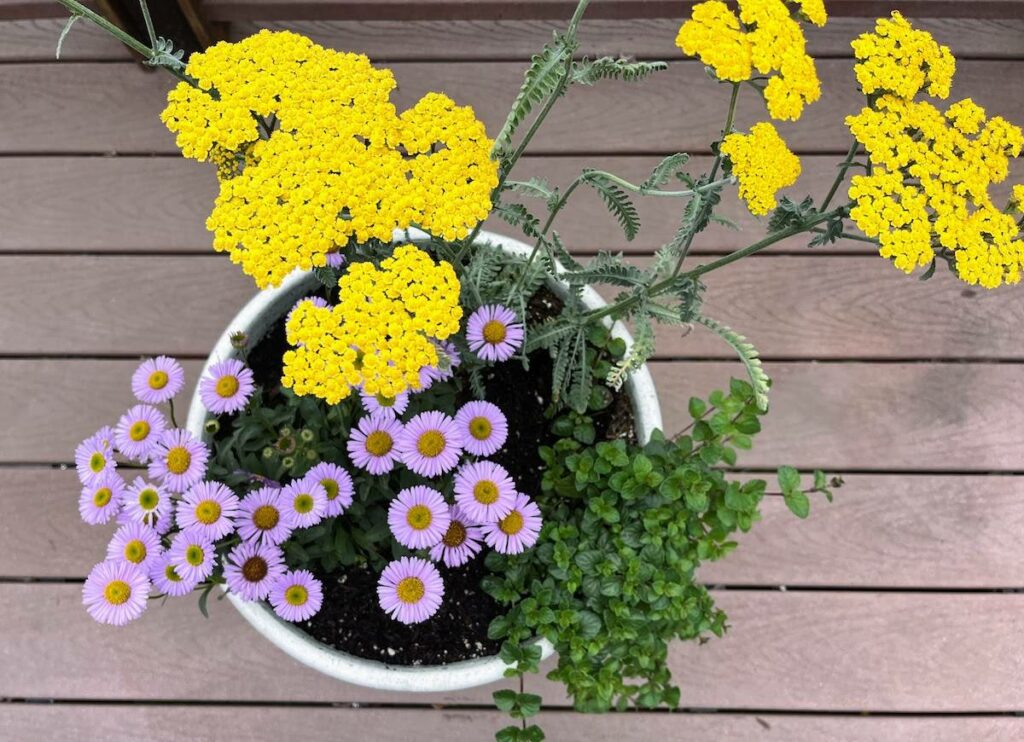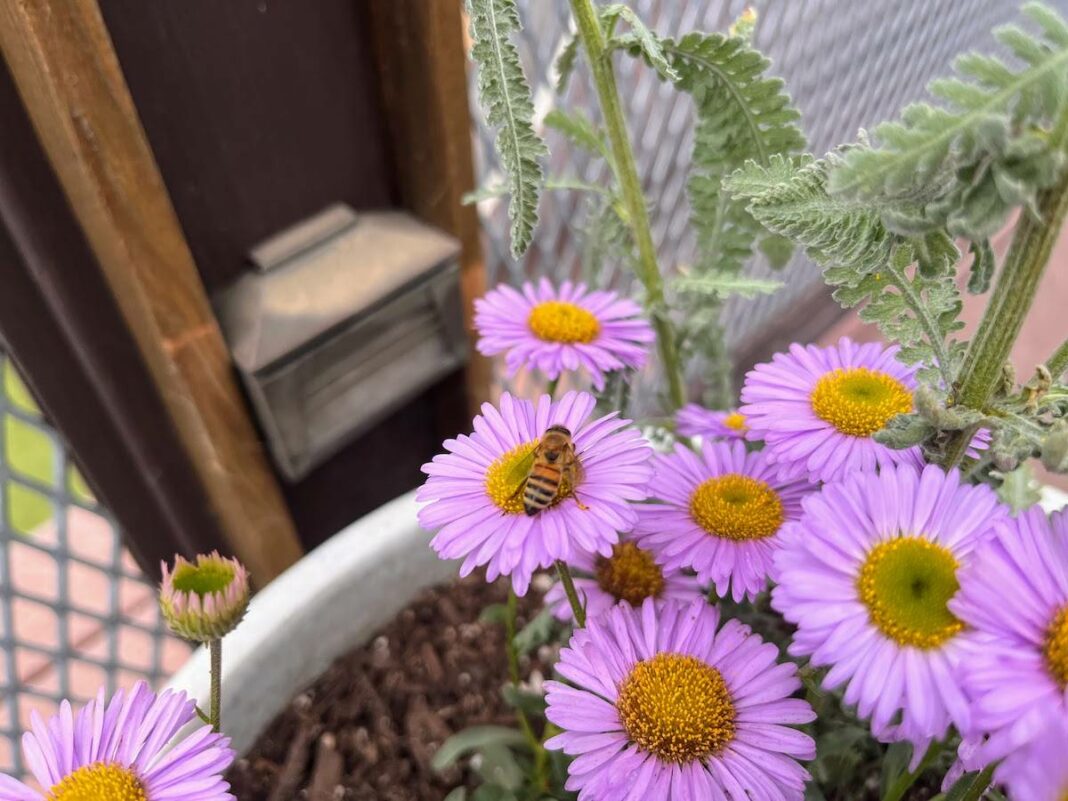Everything you need to know to get started, choose plants, and how many to put in each pot.
June is National Pollinators Month. It’s a time to celebrate all our pollinators, from bees, butterflies, moths, and hummingbirds, to ones humans might find less desirable like ants, flies, and mosquitoes. All are important to a strong ecosystem, a healthy garden, and growing food. So let’s celebrate them, even the mosquitoes!
Getting started
A few years back, I switched my gardening perspective. My yard didn't need to always look magazine perfect, but it did need to have a purpose. As I look around, I’ll ask myself, “What is your purpose in our garden and in the bigger ecosystem?” Is your purpose to feed us, support our pollinators, bring us joy, or connect my children to nature?
After the containers on my deck took a beating (and a lot of neglect) from our unusually wet winter and freak hail storms, I decided to give them a refresher with a purpose. I loaded the kids in the car and headed south about 15 minutes to Native West nursery in the South Bay. Specializing in native plants, they recently opened The Little Barn, a retail space open to the public, so for research purposes I had to go. The landscape turned from urban to quiet streets with horses and my daughter was not mad about it. We parked, grabbed a wagon, and started to explore. We were quickly greeted by a Native West employee who gave us the rundown and was happy to answer all my questions. What works best in containers? I also want to make the pollinators happy. Is it even possible to successfully grow pollinator-friendly natives in pots?

Choosing plants
The nursery is well organized with sections like shade and pollinator-friendly, medicinal, and plants for beneficial insects. She provided some pointers on which plants would likely work best in pots. Containers are a great way to garden in small spaces or when yard space isn't available like with decks and balconies. With a few suggestions, we quickly started to load our wagon, much to my daughter’s dismay as she slowly lost her free ride and my son repeated with annoyance, “Another one, Mom.” Okay, I might be a garden and plant hoarder, but that's for another story. Of course, I can never say no to milkweed, and picked up two varieties: common and Woollypod. Both are covered under the SDG&E Community Tree Rebate Program.
I spend a lot of time at nurseries and Native West had the healthiest-looking natives I have seen and the prices were fantastic. In the middle of the nursery yard is a little old barn filled with stickers, art, and shirts by local vendors all promoting native plants and pollinators. A few stickers later, a full wagon (okay, maybe two), and we were ready to head home and start planting. Our haul included verbena (a butterfly favorite that does well in containers), two types of yarrow (another butterfly favorite), seaside daisy (a great container option for coastal gardens), Clinopodium douglasii (an herb with a minty smell that makes a great tea), and Cape Blanco (a cute succulent-like ground cover).

Three tips when planting in containers
- Plant in odds: For smaller pots pick one plant and for larger ones plant in groups of three.
- Groups of three: Pick a plant that has height and drama (yarrow), one that will fill the space (seaside daisy), and a low trailing plant (Clinopodium douglasii) that will spill over the side.
- Watering: Containers will dry out faster, so pay close attention the first few weeks to establish a solid watering routine. Depending on the location and plant type(s), they might require more frequent watering.


